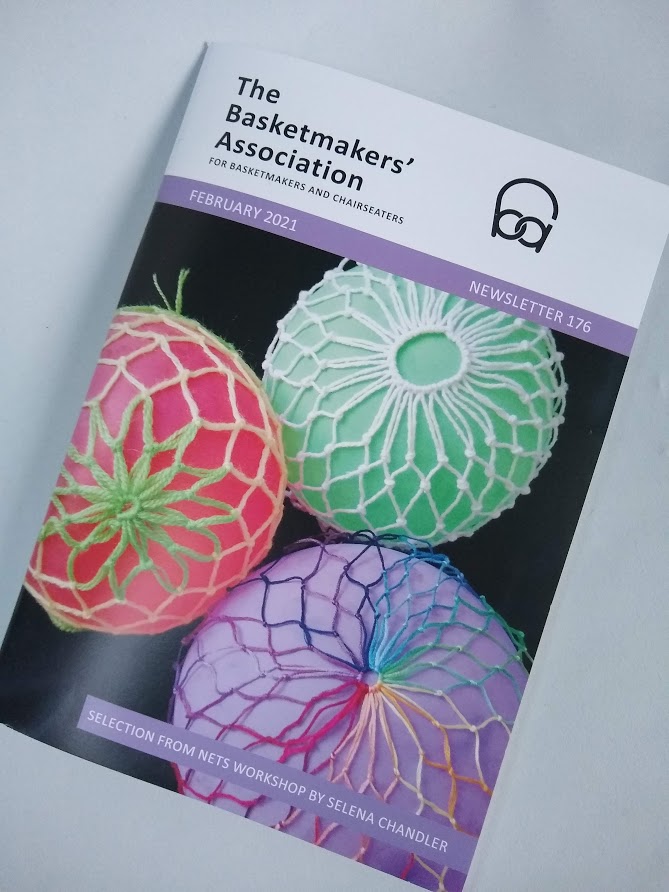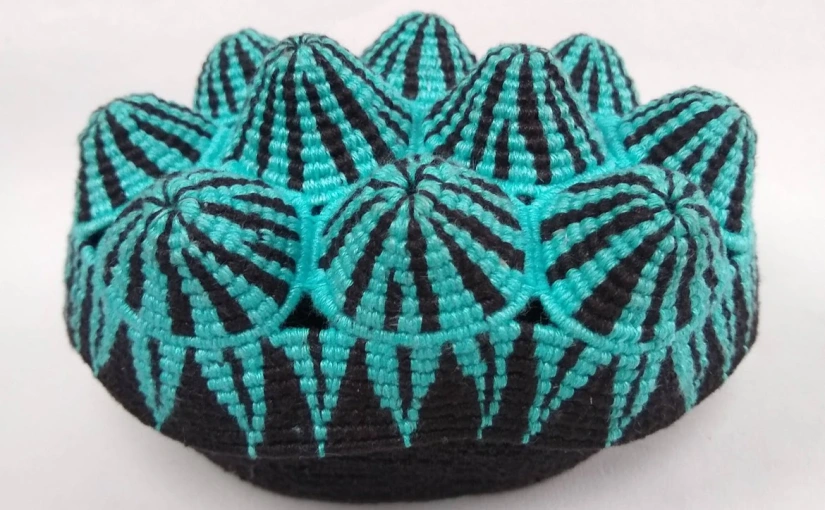I’ve spent most of February working on a commission for a tortoise vessel. Someone saw my black and yellow one on Instagram and asked if I could make one in a different colourway.
As before, I started by making the individual scutes.
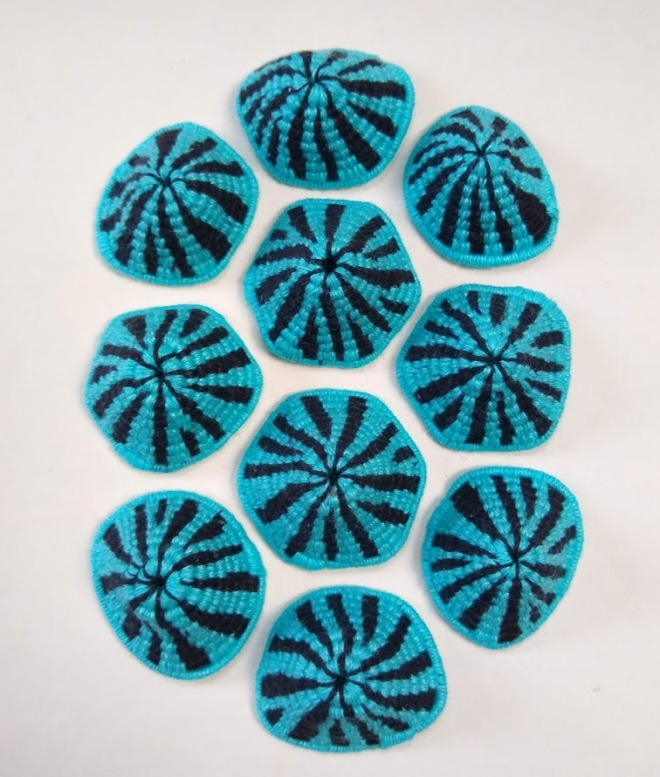
Then I joined them together and added the border.
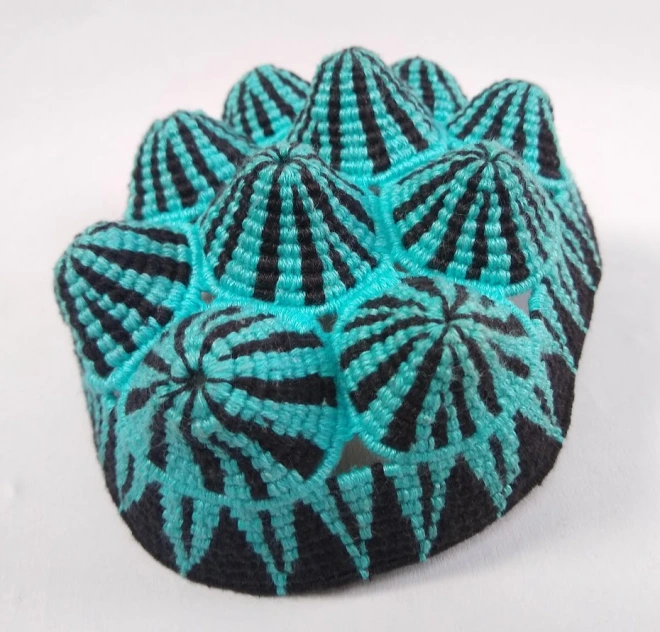
Then I made the base with the hidden tortoise design.

The client was very pleased, and so am I.
Dorset buttons and looping
Although our basketry group has still heard nothing about when our course will resume, we are still meeting every fortnight on Zoom, and choosing a theme to work on for each session.
The first one was Dorset buttons. To be honest, I found this a bit fiddly. I normally like fiddly, but maybe I needed a break after the fiddly work on the tortoise. But I did manage to produce a button!

Then we had a go at looping. I found this more relaxing and tried two methods. The first one was looping around a stone, starting at the opening on top and closing it together on the bottom.


As you can see, the looping pattern looks quite regular on the top and sides, but becomes more irregular and organic on the bottom where I pulled the loops together to close up.
I also made a looped basket with homemade cordage, this time starting at the bottom and working up to finish at the opening. The advantage of this is that I made the cordage as I went along, so didn’t have to worry about how to hide the joins.
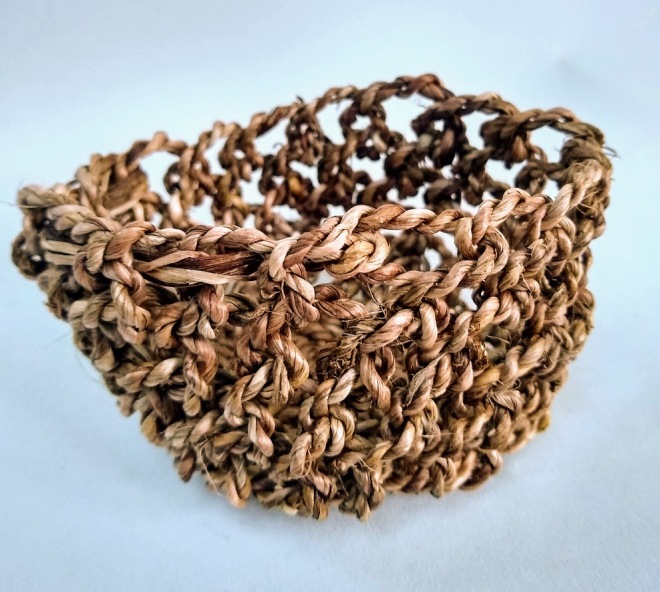
Tetrapak dog update
I’ve made a bit of progress on the dog. The back half is complete, along with the head and the front legs.


I only need to drink another five cartons of orange juice to get enough material to finish it!
Packaging material and ice
One of the highlights of my month was receiving a delivery (replacement butter dish, not very interesting) wrapped in some fantastic packaging material – some kind of pierced brown paper.

What was interesting is the way the paper had opened up and retained the form of what it was wrapped around, a bit like memory foam.
Apparently, according to comments on my Instagram post, it’s called Geami WrapPak. I’ve saved it until I can work out what to do with it!
We also had a very cold spell, where temperatures didn’t rise above 0ºC for several days. A basin of water I’d left in the garden froze solid – a chance to try making an ice sculpture by moving the frozen block into a different position every day.



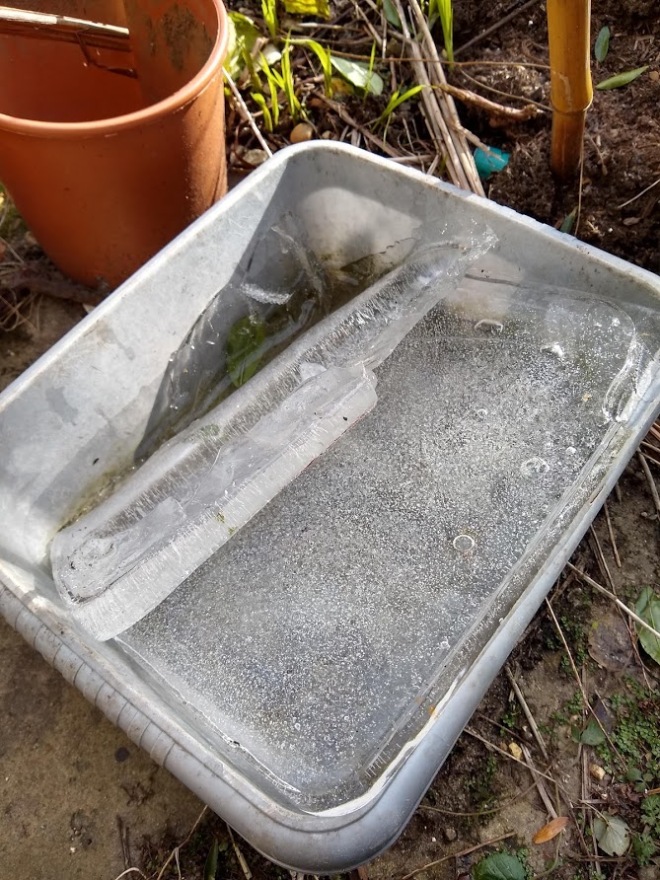
However, the temperature rose again before I could get the full propeller effect!
As I write this, it’s warmed up enough for the first frogspawn to appear in the pond.

The other news is that I am to be the new editor of the Basketmakers’ Association newsletter. Although it’s called a newsletter, it’s a 68-page journal that is published four times a year, so it will be quite a lot of work! But there is a very supportive team (we are all volunteers), and I’m looking forward to making lots of interesting contacts with some fantastic basketmakers. So wish me luck!
